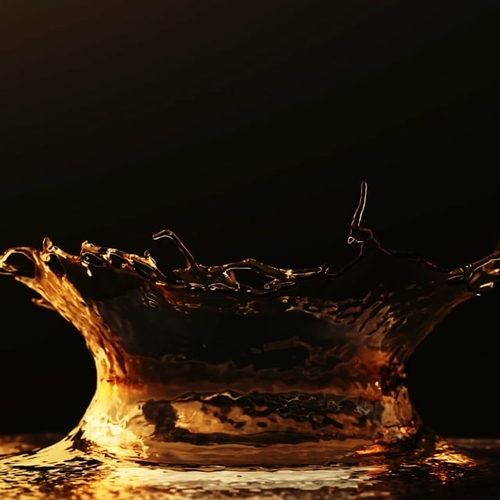Approaching urban soil from the perspective of SCALE was the topic of the first gathering of the Academic Workshop Soil, upon which Jaehun Park’s 3D animation is based. Invited speakers were Wilko Koning, water expert and commissioner of pipe works at Waternet, and Toby Kiers, professor of Evolutionary Biology at the VU Amsterdam and is executive director of SPUN, the Society for the Protection of Underground Networks.
Koning covered the history of the water system of Amsterdam, from canals to drinking water to sewage and rainwater, and the important technical aspects in terms of maintenance and design to ensure the city accommodates water in all its forms in a safe, healthy and efficient way. He highlighted the role of rainproof measures, like water infiltration strips, to bring water to the soil and to vegetation. Kiers shared about her research on fungal mycelium, about which so little is known, and its vital role in nutrient exchange and sustaining ecological systems. Although a strand of mycelium is often as thin as a single cell, the largest organism on earth is fungal – the paradox of scale. As seen in the animation, the competition for space between biotic elements like trees and abiotic structures like cables and pipes underscores the need for multiscalar design approaches.
Our urban soil is filled with cables and pipes for water, sewage, gas, telecom, and electricity—flows and energy systems that are critical to the city’s urban metabolism. Inside the soil, organic waste is transformed into nutrients to be available for other organisms, including animals, plants, fungi, and bacteria. How do different scales interact in soil and the city, considering that without microorganisms and living soil, human existence would be impossible? How can we feel connected to life forms or ecological processes that we cannot directly perceive? How do we make a city that observes and cares for the soil and the greater Earth ecosystem at every scale?
Jaehun Park’s video art highlights the complex and often hidden interactions between biotic and abiotic elements within urban environments. From the smallest raindrop and the thinnest strands of single-celled mycelium to city-wide water pipe networks and fungal connectivity supporting all plants and trees. What does scale mean when something so small is at the same time so vast? The animation also alludes to the multifaceted influences and impacts on soil by microscopic particles and organisms, extending to the broad scales of global markets, climate change, and spatial planning practices. Park’s video points towards the need for a paradigm shift to genuinely integrate the underground into urban planning. How can we foster a deeper collective understanding of how urban and ecological processes intersect, envisioning a city that respects and integrates the complex web of life both above and below ground?
How to plan for the microscopic flows, such as tree sap and mycelium, that create and sustain macroscopic systems like urban ecology, green infrastructure, and energy grids? How can we design cities for all parts of the water cycle, so it can nourish humans as well as other organisms and contribute to our collective urban climate resilience?
Mapping these networks and flows, including water, information, and mycelium, is crucial. How can we use innovative data technology and artificial intelligence to switch between top-down, big data predictions and localized tests, observations, and interventions? And how do we deal with the unknown, from barely understood fungi to the unforeseen consequences of climate change to untested impacts of new technologies?
More broadly, we need to question how we can act less anthropocentrically and in a more long-term way. Reflecting on our decision-making processes and value systems, it begs the question: are they leading to more life and diversity or less?
About Jaehun Park
Jaehun Park’s virtual works deal with current problematic events on Earth by zooming in on cleverly chosen metaphors and objects. In his simulated video works, he translates physical substance using 3D scanning technology into virtual substance, such as polygon structures and point cloud systems (a set of data points in space). He uses hyper-realistic 3D rendering to stage mass-produced objects – as vessels of capitalistic ideology – in an abandoned digital space or to situate them in ‘ritualistic’ installations depicting impossible natural phenomena. The different kinds of staged objects depict dark Korean histories, but also violent histories of the entire human race. Moreover, these by-products of a hyper-capitalistic, machine-driven civilization and symbols of war unfold in a virtual hellscape – a place inhabited by ready-made 3D digital objects as well as instruments of torture and tortured humans. A seemingly unreal landscape; perhaps closer to the reality of our time than we wish to believe.
Park doesn’t shy away from anything in his work. With his simulation algorithms, manipulated and staged virtual landscapes, and installations, he reveals the tip of the real world – oversaturated by hideous and glorious moments of capitalism. Desire, vanity, guilt, irrationality, and indebtedness become resources in the ‘ritual’ space of capitalism. The concept of hell doesn’t manifest itself after death, but here in this hellish reality.
Jaehun Park (1986, South Korea) lives and works in Amsterdam and Seoul. Graduated from the Department of Painting (BFA, MFA) at Seoul National University and Master Artistic Research at the Royal Academy of Arts in The Hague. Recent exhibitions include Topographic Atlas, JAN Museum, Amstelveen (2022), Art and Peace: Let us begin again from zero o’clock, Ulsan Art Museum, Ulsan (2022), Alternative Space Loop Seoul (2021), Sign Project Space Groningen (2021), Photo Basel (2021), Unseen Amsterdam (2021), Project Space 1646 The Hague (2019), and Artspace O Seoul (2016). His work is part of several collections including Amstelveen Municipal Art Collection, Normec, The Seoul Foundation for Arts and Culture, Korea Institute for Advanced Study and the Seoul National University Health Service Center.
Source: galleryviewer.com
